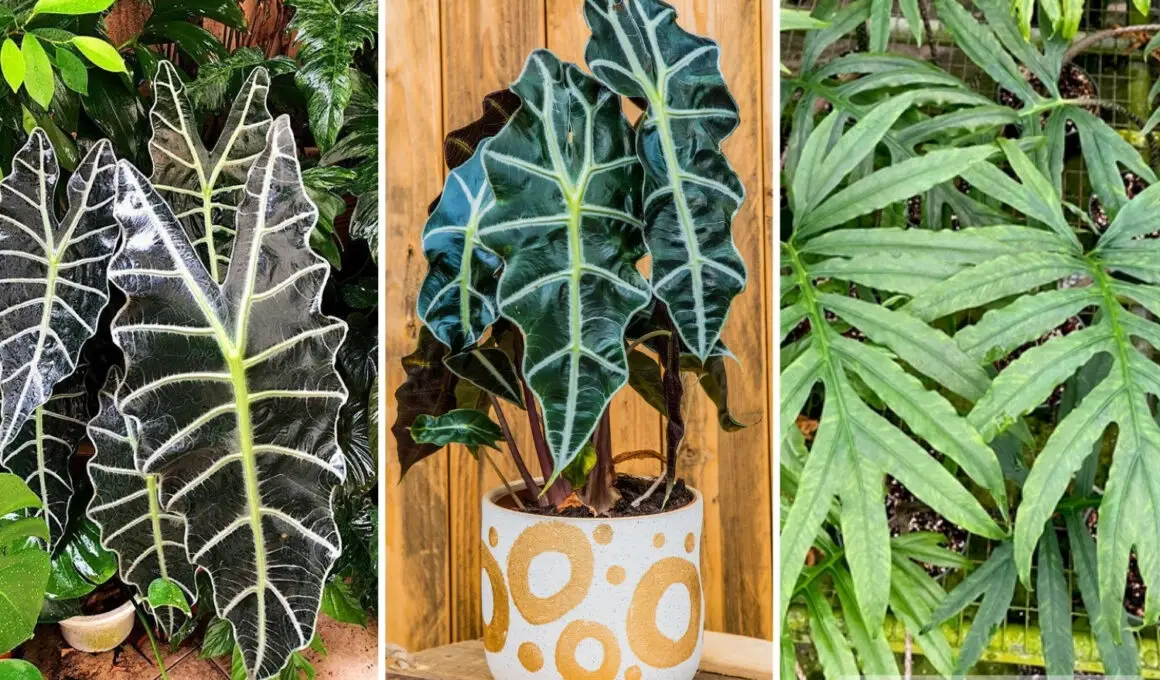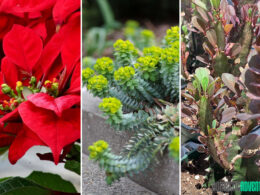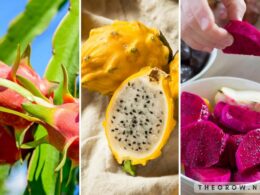In This Article Show
If you want to learn about the various alocasia varieties and all that there is, this is the best place to be, as we’ve listed every known type of alocasia plant in existence today.
The Alocasia plants are popular choices among plantsmen and interior designers due to their spectacular foliage shape, size, and unique markings that transform the outlook of any environment they are grown. Some varieties are rare and common; some are more expensive than others.
If Alocasia houseplant is a priority to propagate this season, this article is what you need. All the most common and rare varieties have been included for you. The growth needs for most varieties have been included alongside instructions to guide beginners.
Alocasia Plant Overview
The Alocasia is known for its striking, large leaves that can be green, purple, or black and add a tropical touch to any indoor or outdoor space. It is also a common houseplant that is relatively easy to grow but requires consistent care to keep healthy and beautiful.
Here are some more details about the alocasia plant:
| Common name | Alocasia, African mask, elephant ears |
|---|---|
| Scientific name | Alocasia spp. |
| Family | Araceae |
| Origin | Southeast Asia and tropical regions of the world |
| Height | Can grow up to 6 ft tall |
| Leaves | Small, green, and inconspicuous, borne on a spadix |
| Flowers | Small, green and inconspicuous, borne on a spadix |
| Fruit | berries |
| Season | All year round |
| Climate | Tropical and subtropical, prefers high humidity and warm temperatures |
| Soil | Well-drained, rich, and moist |
| Light | Bright, indirect light, can tolerate low light |
| Watering | Keep soil consistently moist, but not waterlogged |
| Propagation | Division of rhizomes or from seed. |
26 Common and Rare Alocasia Varieties
Here are some of the most known and rarely seen types of alocasia plants.
Get Gardening For Beginners
Our new EBOOK shows newcomers and green thumbs alike a step by step guide to growing the garden of their dreams.
1. Alocasia Amazonica
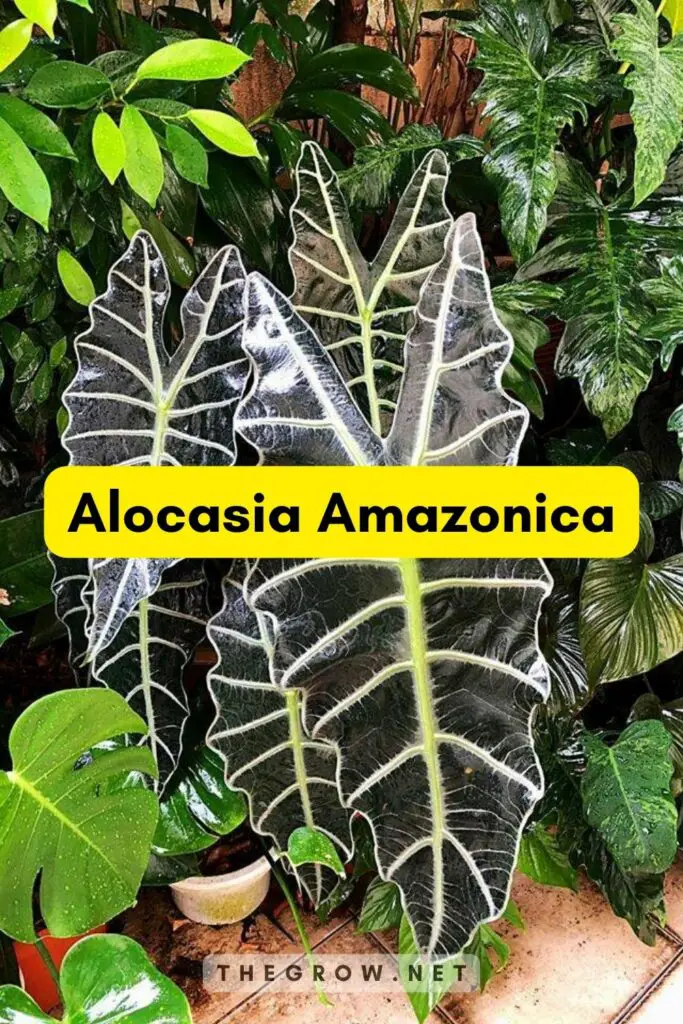
Alocasia Amazonica is a striking hybrid of Alocasia Sanderiana and Alocasia Watsoniana. Due to its origin, this adaptable houseplant is rare and cannot be traced to a natural habitat so it may be pricey. Alocasia amazonica can be propagated and cared for all year.
This house plant thrives in a warm and humid environment where it can receive adequate sunlight to blossom without defects. If properly nurtured, Alocasia amazonica can grow up to 16 inches in length and about 2 feet in width.
The striking alocasia has a lifespan of about five years, but you can bypass it by propagating Alocasia amazonicas through divisions.
2. Black Magic Alocasia

Black Magic, Colocasia esculenta, is a highly adaptable Alocasia variety as it can be grown indoors and outdoors. Although rare, this houseplant is notable for its unusually dark foliage leaves that leave a thrilling mark on any environment it is grown.
Most houseplant growers prefer growing Black Magic indoors because it can brighten any interior. Its origins can be traced to Asia; at full maturity, it can grow to 6 feet.
Although it’s a pretty plant, it should be grown cautiously as it is toxic and could harm kids or pets.
3. Alocasia Rugosa

Also called Alocasia Melo, Rugosa is an eye-catching variety notable for its deep foliage color, mosaic foliage pattern, and thick rubbery leaves. In an attractive pot or container, it will do no small good to enhance your home or environment.
Get Gardening For Beginners
Our new EBOOK shows newcomers and green thumbs alike a step by step guide to growing the garden of their dreams.
Alocasia rugosa can be grown indoors and outdoors, but its eye-catching effect makes it perfect for an indoor setting. Alocasia melo will thrive in a humid environment where it receives adequate sunlight, watering, and fertilization.
At maturity, they can grow to 10 inches in length and 6 inches in width. You should know that Alocasia is a slow grower, but it’s worth the wait.
4. Yucatan Princess Alocasia

Alocasia Masquerade is the other name plantsmen have for the Yucatan Princess. Yucatan Princess is popular for its large foliage size, impressive shape, and pattern. Although perfect for indoor appeal, the best of your Yucatan Princess is obtained when it is grown outdoors and can bloom beautifully with proper care and nurturing.
During bloom time when grown outdoors, Alocasia Masquerade buds striking pink or purple flowers. A trick you should consider is exposing them to outdoor sunlight and environment before moving them indoors so they will be a beauty to behold when placed in your home.
5. Tiger Taro Alocasia
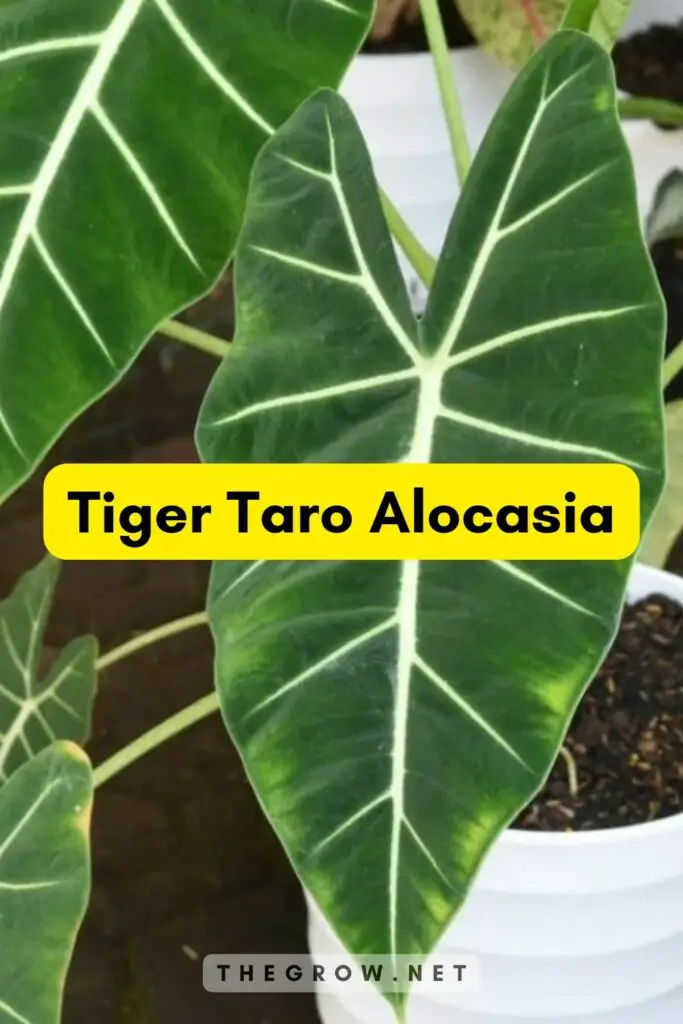
Tiger taro, Alocasia longiloba, is considered an unusual variety due to its thin stalk and sparse leaves. It is notable for its glossy foliage surface and distinctive heart shape. Tiger taro is a fast-growing breed that can develop leaves within a few weeks of propagation.
Alocasia longiloba should be grown in organic soil at low temperatures with proper lighting and adequate watering. When grown indoors, they can grow up to 3 feet without defects.
The best location to grow Tiger Taro indoors is on shelves and in the corners of window sills; your ultimate goal when choosing a location is to select a choice that would provide adequate lighting (bright but indirect) for the plant. You should choose a schedule that would suit the needs of the growth, but this shouldn’t be a bother since Tiger Taro is a low-maintenance plant.
6. Stingray Alocasia

Alocasia varieties belong to leagues of their own; the Alocasia stingray is one of those varieties. Its dramatic foliage appearance may be what is needed to create the vibe desired for the interior design of your home.
It’s one of the rarest and most sought-after Alocasia varieties. Most ornamental stores and nurseries are unwilling to sell or give up their Alocasia stingray, hence the pricey tag. This house plant can grow up to 4 feet in length and width indoors and 15 feet in length and 8 feet in width outdoors.
7. African Mask Alocasia
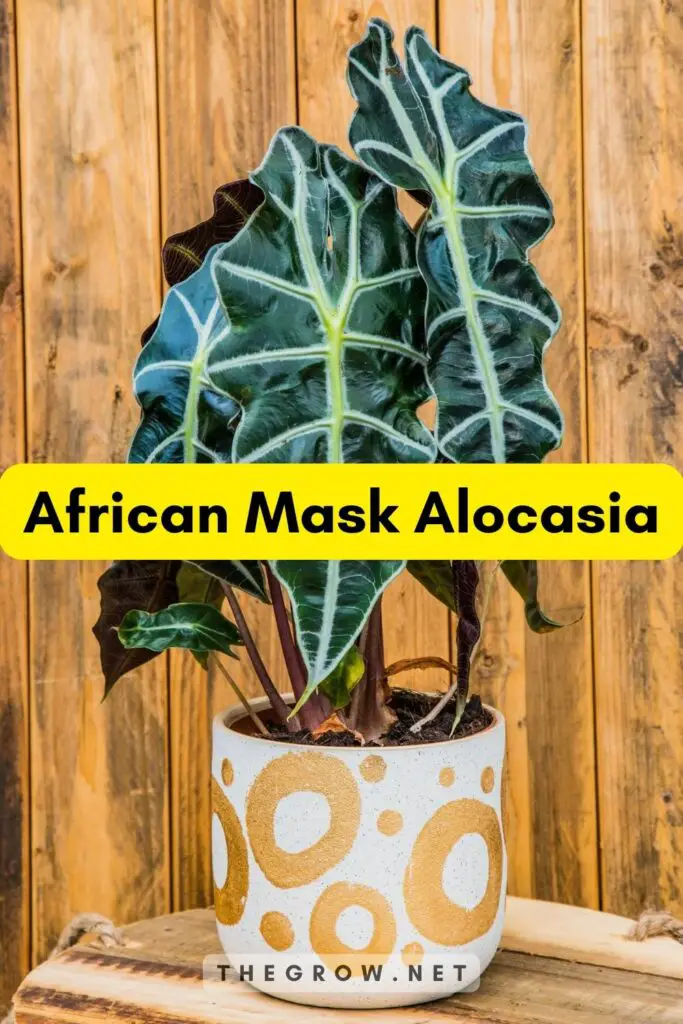
African Mask is popular for its spectacular foliage shape and design; its foliage surface is marked with thick vein-like patterns and wavy edges. The lower surface of the African mask is burgundy.
It cannot be traced to its native habitat, but speculations suggest it is a hybrid plant, making it a rare and somewhat expensive variety.
African masks can grow up to 2 feet in length and width when grown indoors. They should be grown in appropriate and attractive containers to enhance the outlook of your environment. While you can select a fancy container, note that it should be well drilled to allow for proper draining to prevent soaking the roots.
8. Silver Dragon Alocasia
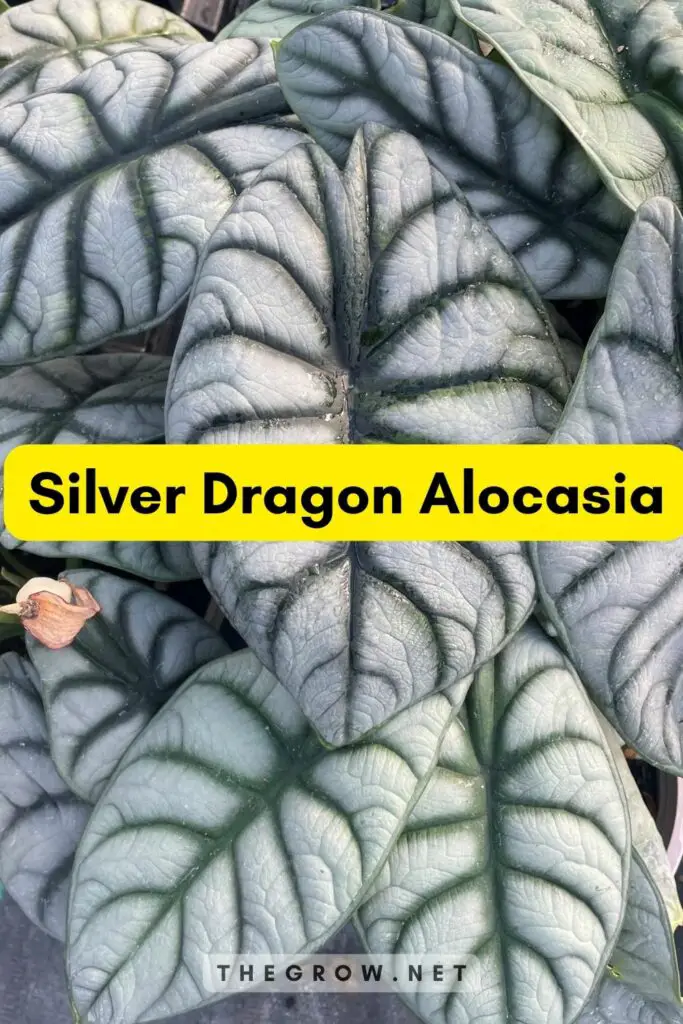
The Silver Plant Alocasia is every inch stunning due to its unusual foliage color and pattern. Although it can be grown indoors and outdoors, it is most suitable for indoor propagation due to its foliage appearance.
The silver dragon grows in thick stalks and thrives in organic soil and proper humidity. They are best located in spots where they can receive bright but indirect light.
Due to its exotic features, it is rare and expensive, and beginners are advised to begin their Alocasia propagation journey with other low-maintenance varieties. However, this shouldn’t stop you from going for it if it’s something you want.
9. Nigra Alocasia
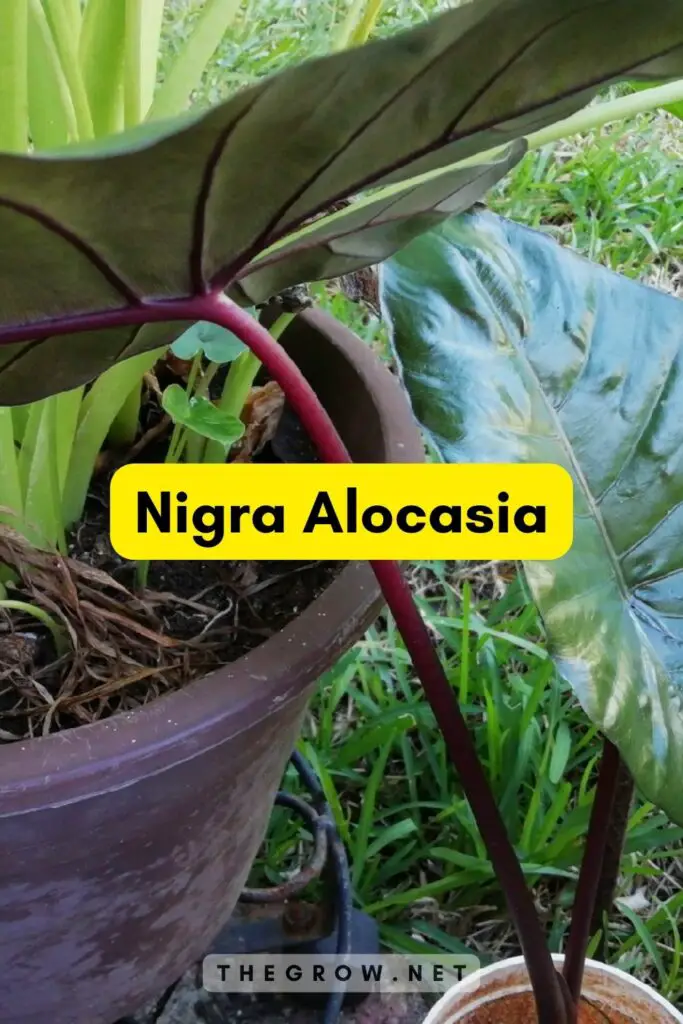
Nigra, Alocasia plumbea, is a statement variety due to its ability to grow wide when propagated outdoors. This plant will grow to a small size if propagated indoors, but it does not reduce the effect it can have on your environment. Alocasia nigra is popular for its dark green foliage color and velvet exterior.
They are low-maintenance plants that will last through tough times, but this does not mean that their growth needs should be ignored.
They thrive in organic soil laced with perlite and should be exposed to at least six hours of bright but indirect sunlight daily. To boost growth, you can fertilize once a month but keep it off during winter.
10. Zebrina Alocasia

Alocasia Zebrina has a similar foliage appearance to Tiger Taro; the major difference between both varieties is that Zebrina has uniquely colored striped stems (brown and white). Although its origin can be traced to Asia, it has become a rare variety due to overharvesting.
Like most Alocasia varieties, Zebrina is an easy-maintenance houseplant that requires an average home humidity level, a warm temperature, adequate watering and sunlight, and an appropriate container to thrive.
To boost its growth and foliage brilliance, you can apply fertilizers periodically. Alocasia zebrina is a toxic houseplant and should be kept away from pets and children.
11. Purple Umbrella Alocasia
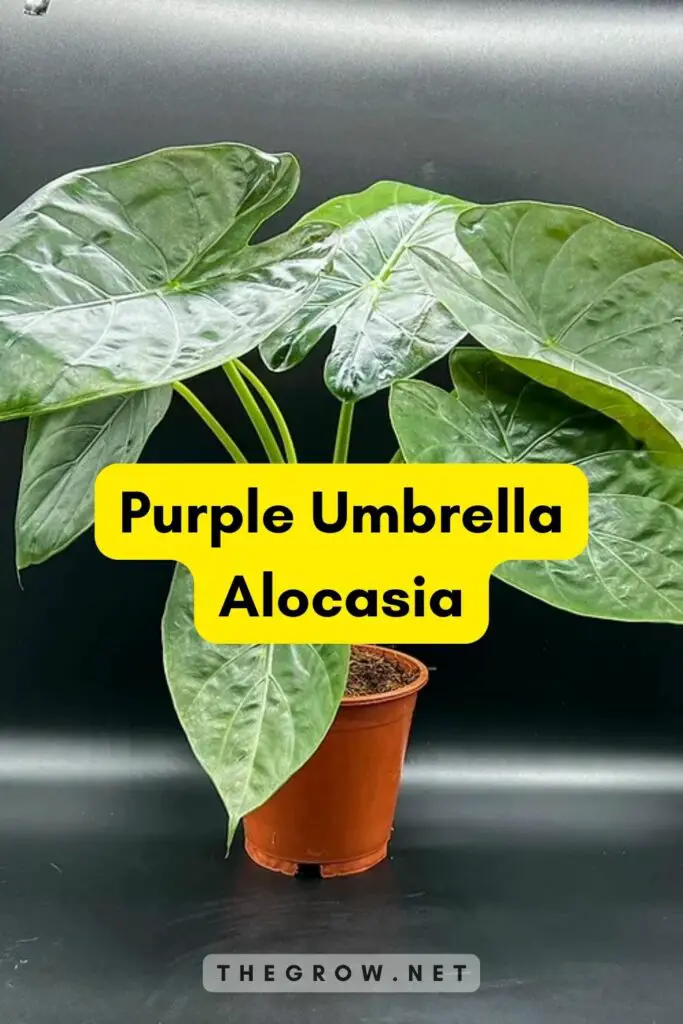
If you are looking for an Alocasia variety with one of the largest foliage sizes, Purple Umbrella (Alocasia Wentii) is your best bet. Whether grown indoors or outdoors, the purple umbrella grows into a wide and bold houseplant that enhances the appeal of your home. They are best grown in warm environments to thrive beautifully.
Add fertilizer periodically (once a month) to boost your purple umbrella’s growth and ensure you adequately tend to its growth needs. Since Alocasia Wentii grows wide and long, you should place them in an environment where sunlight, water, and fertilizer can be evenly distributed.
12. Miri Alocasia

Alocasia Miri is a rare Alocasia breed whose origin can be traced to Malaysia. It is appreciated for its compact leaves and size. Due to its compact size, you can situate multiple Miri containers around your home to increase the aesthetic effect.
You can complement the outlook of the Alocasia Miri by growing it in a fancy container. To get the best out of your Alocasia Miri, ensure it is grown in a well-drilled container for proper drainage and placed in an area with adequate humidity and a warm temperature.
13. Pink Passion Alocasia
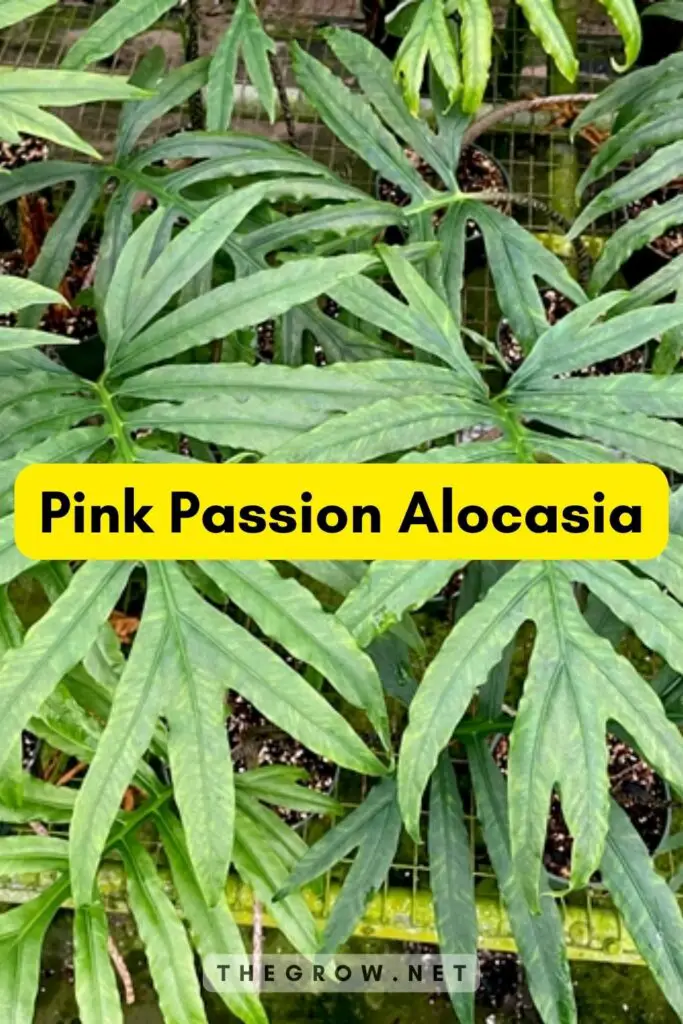
Alocasia brancifolia, Pink Passion, belongs to the extravagant league of Alocasia varieties due to its wide and fancy foliage shape. It’s a rare breed, but you can become a Pink Passion owner by ordering from a popular store or online nursery.
It’s a fast-growing plant that, if tended properly, can grow new leaves within a few weeks. It’s a suitable option for beginners because it is adaptable and an easy-to-maintain plant.
We advise that you create a schedule that would cater to the growing needs of your Pink Passion so you can get the best out of its alluring effect.
14. Samar Alocasia

Alocasia scalprum, or Samar, is appreciated for its small size and lanceolate-shaped leaves. The rubbery plant can be grown indoors and outdoors, but its compact size makes it suitable for indoor placement. The best locations indoors for your Alocasia Samar are shelves, table tops, and window sills.
They should never be kept in a dark or dry corner, or else they will lose their foliage brilliance. Alocasia scalprum is suitable for beginners and will thrive if basic growth needs are provided.
These growths need to include appropriate containers, organic soil, proper watering, bright but indirect sunlight, humid and warm temperatures, and periodic fertilization.
15. Malaysian Monster Alocasia

Also known as Alocasia Portei, Malaysian Monster is a dramatic variety popular for its velvety feel, lobed leaves, and wavy edges. They grow into large plants when grown outdoors, but their petite size, when grown indoors, is deeply appreciated by plantmen and interior designers.
The best time to grow the Malaysian Monster is in the spring when the weather is warm.
During winter, they go into dormancy and may lose leaves, but beginners are encouraged to be patient, as they will bounce back right after winter and grow into elegant plants. The Malaysian Monster is toxic and should be kept out of kids’ and pets’ reach.
16. Red Secret Alocasia
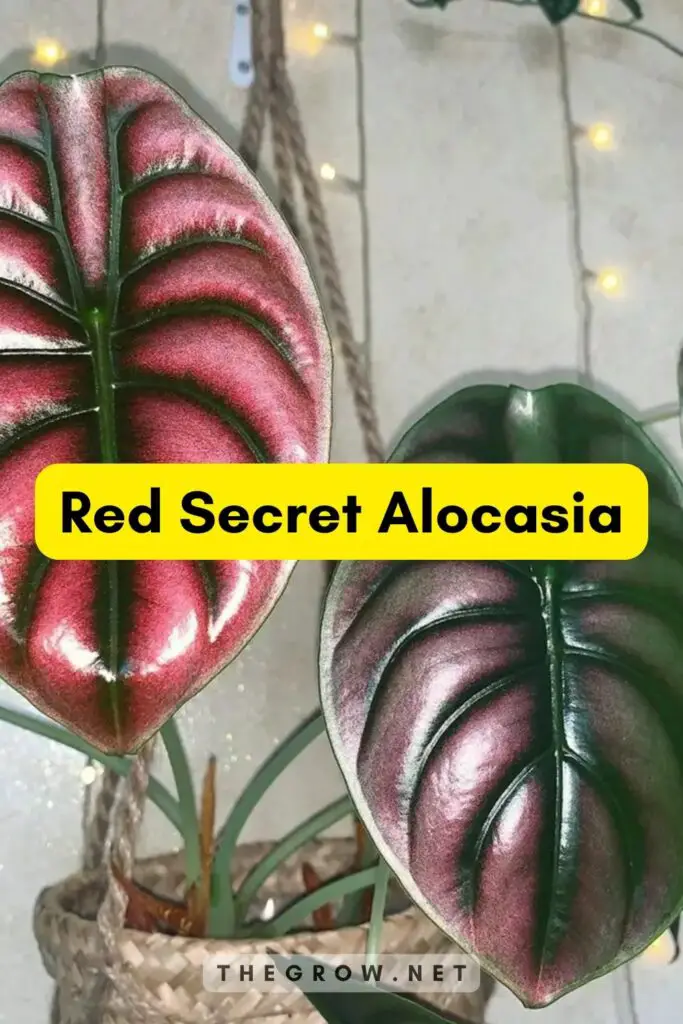
The Red Secret Alocasia tops the list of the most popular varieties grown by planters and recommended by interior designers. Its origin can be traced to Borneo, but it has become a rare variety.
Alocasia cuprea, or Red Secret, is notable for its foliage color and design, which is a combination of dark green and deep burgundy.
The foliage pattern has a similarity to the spider-leg pattern. To preserve its foliage brilliance, ensure that its soil is kept moist but not soaked to prevent root rot or other complications. Red Secret thrives on these basic growth needs: an appropriate container, watering, adequate sunlight, and a warm temperature.
17. Hooded Dwarf Alocasia

Alocasia cucullata, or Hooded Dwarf, is a great choice to add to your houseplant collection if you already have one. It is equally a good starter choice for beginners because it is easy to propagate and maintain. The hooded dwarf is a green, heart-shaped plant with deep markings that make it an elegant Alocasia variety.
The best time to propagate Alocasia cucullata is during the spring when it will grow under comfortable weather conditions.
You can improve the aesthetic effect of the hooded dwarves by placing them in an attractive container in a conspicuous location. Note that this plant should never be kept in a dark or dry area because any complication will affect its foliage brilliance.
18. Alocasia Odora
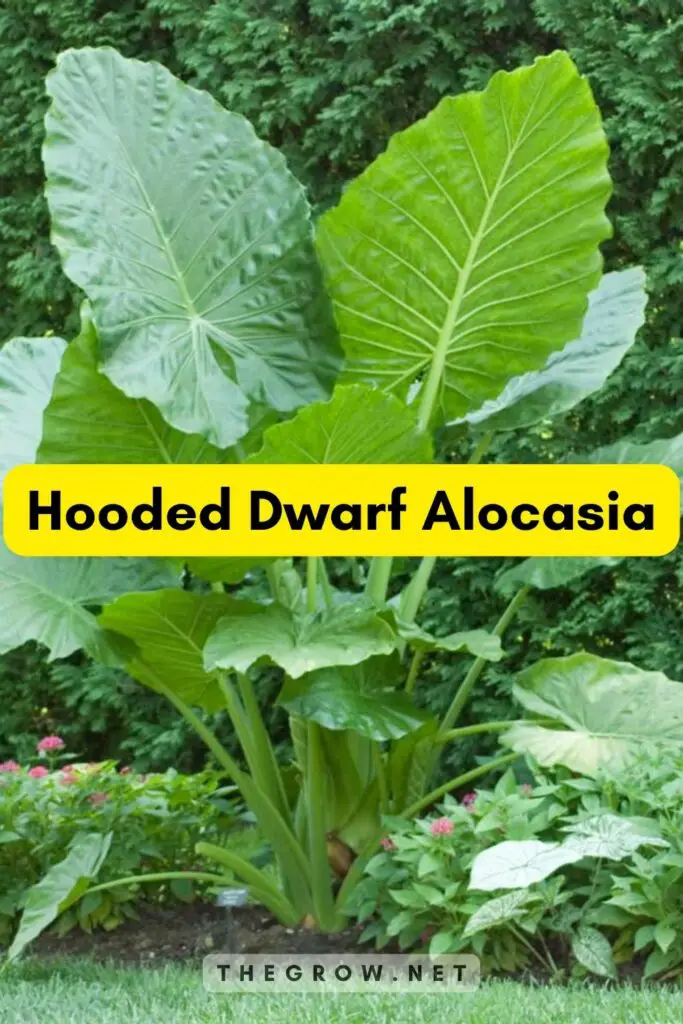
The paddle-shaped plant is an eye-catching Alocasia variety due to its ability to grow wide, enhancing the outlook of any environment it is grown. This Alocasia variety popularly referred to as the “Night-Scented Lily,”
Alocasia Odora can be grown indoors and outdoors; both environments will require the basic growth needs of organic soil, watering, sunlight, and a warm temperature, but in different measures and degrees.
Although rare, some varieties of the Alocasia Odora have a multicolor foliage design. It is a spreading plant when grown outdoors, but if grown indoors, you can place it in a convenient environment, so the plant can grow without discomfort and growth nutrients can spread evenly.
19. Bambino Alocasia
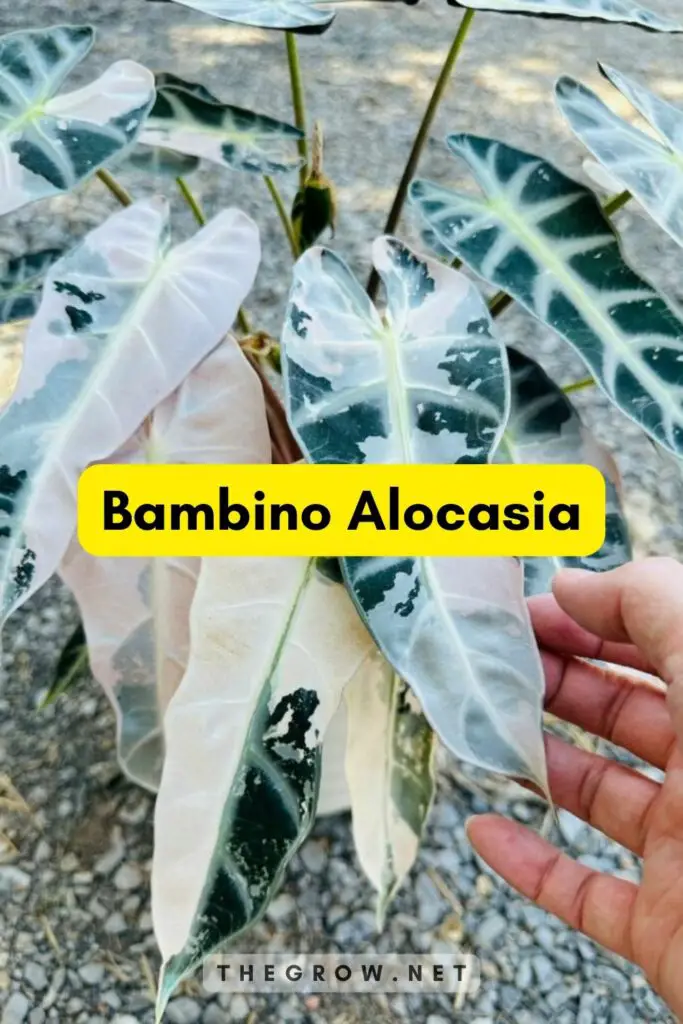
Remember we talked about Alocasia varieties that are in a league of their own? Alocasia Bambino belongs to that league. The stunning markings of the Bambino make it a distinct Alocasia variety and a show-stopper regardless of the environment it is grown.
Their unique markings make them a top choice for an indoor collection, and they will be a great addition to personal spaces like your home or workspace.
Its origin can be traced to Southeast Asia. To preserve and maintain their foliage attractiveness, mist the leaves regularly, along with providing for their growth needs adequately.
20. Alocasia Flying Squid
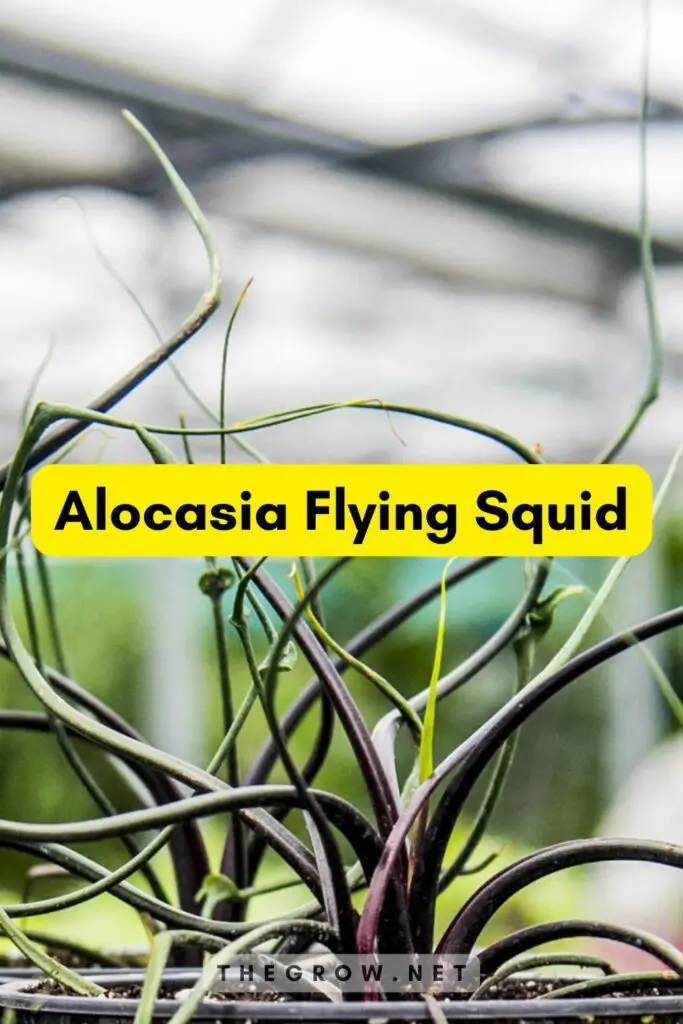
If you are looking for an Alocasia variety that commands attention, the Flying Squid is your best bet. As its name implies, this Alocasia variety has squid-like petioles that grow uncoordinatedly, giving it an elegant appeal for interior design.
Since this plant has an extravagant display, it’s only fair to complement its beauty by placing it in a fancy container and a conspicuous location so it can be the statement houseplant for which it’s known.
It’s a rare, expensive variety and is often considered a treasure once purchased and grown.
21. Reticulata Alocasia

Alocasia Reticulata has a similar foliage shape to Alocasia Zebrina, except that Reticulata is notable for its multicolor markings on the foliage surface. Reticulata is popular for emerging with different green hues as it matures.
This houseplant can be grown indoors and outdoors, but it’s a popular choice for indoor propagation due to its eye-catching foliage shape and compactness, which do no small good to the interior outlook of your home or workspace.
Although they should be grown in attractive containers, choose containers with well-drilled holes that will allow for proper drainage.
22. Purple Sword Alocasia
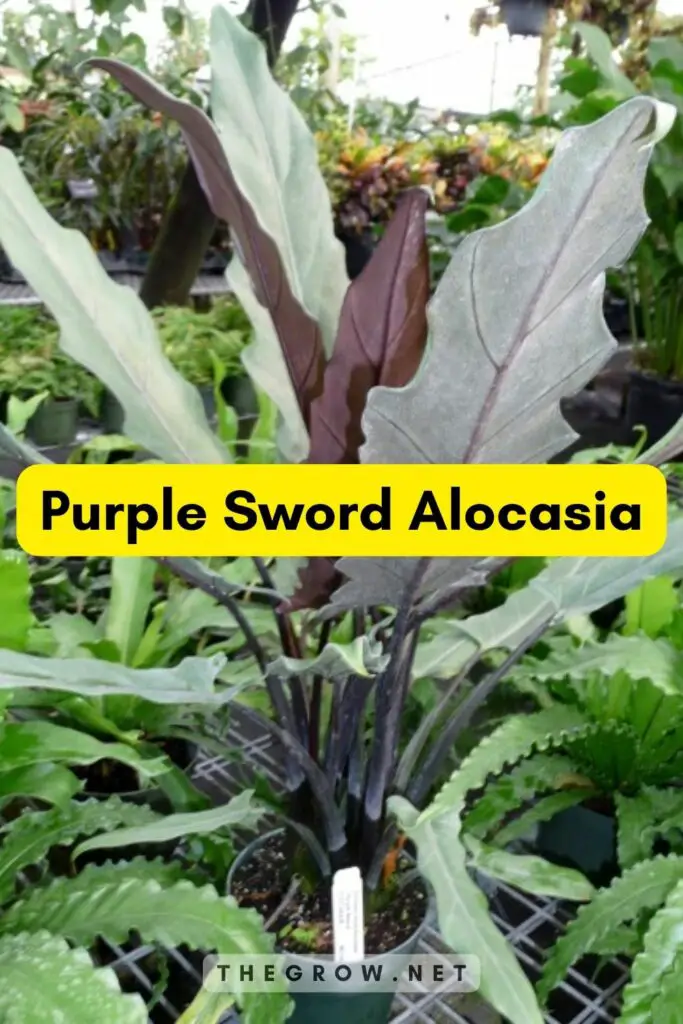
The Purple Sword is an unusual variety that grows in an upward manner with wavy edges and a multicolor foliage surface (purple and green). Alocasia Lauterbachiana, or Purple Sword, is a low-maintenance plant; hence, its growth needs are not demanding and it will thrive under adequate care.
At full maturity when grown indoors, the purple sword is expected to reach 4 meters in height and 1.5 meters in width.
The long-lanced Alocasia can be traced to Asia and New Guinea and is available in popular ornamental stores and nurseries. Alocasia Lauterbachiana is a fast grower, so you are expected to notice the growth of new leaves within a few weeks of propagation.
23. Grey Dragon Alocasia

Alocasia Maharani, also known as Grey Dragon, is often confused with Silver Dragon, but they are different Alocasia varieties. The distinguishing feature between both varieties is that Grey Dragon has a gray-green foliage color with a silver-white lining, while Silver Dragon has a green-silver foliage color with deep green veins.
Grey Dragon is a rare variety because it is a hybrid of Alocasia Reginula and Alocasia Rugosa. They are one of the priciest Alocasia varieties to purchase, but their stunning outlook is worth every penny. The Grey Dragon is appreciated for its compact size, as it can only grow to a height of about 14 inches.
24. Dragon scale Alocasia

The Dragon Scale Alocasia was named after its unique foliage markings that have a resemblance to a dragon pattern. The dragon scale is not a demanding plant and will thrive with adequate provision for its growth needs.
Use a well-drilled container for potting and ensure you re-pot once it has outgrown its pot size. The Dragon Scale is a rare breed and falls on the pricey side, but it’s a great addition to any houseplant collection. This Alocasia variety is highly toxic and should be kept away from children and pets.
25. Corazon Alocasia
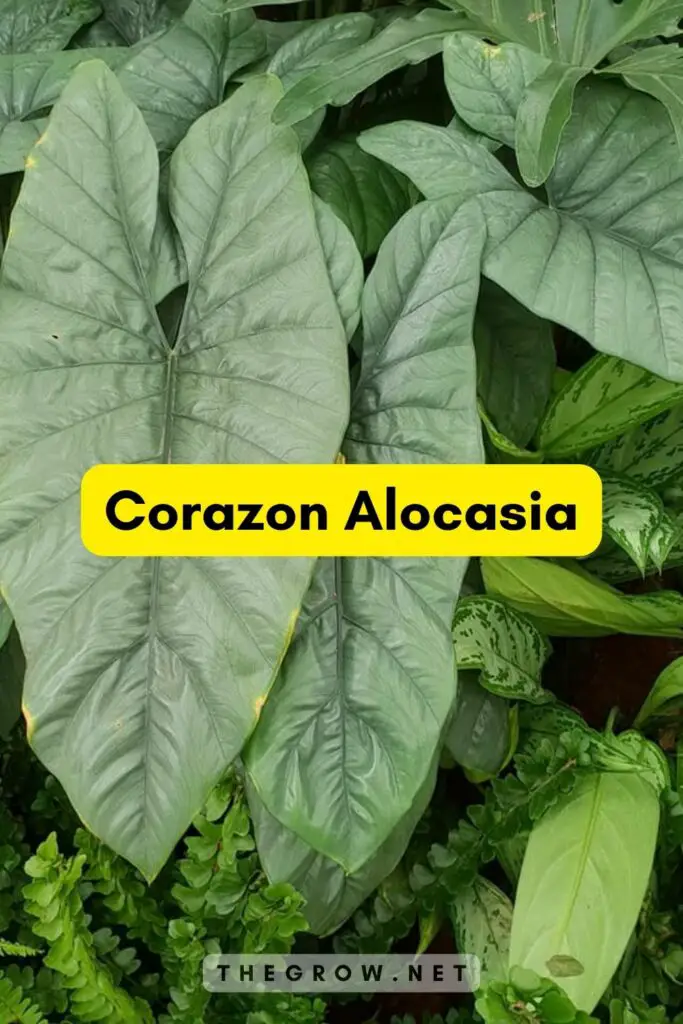
Not every houseplant gets to be named after a President; this exotic Alocasia was named after a Philippine President, Corazon Aquino. Alocasia Corazon has an impressive foliage surface of deep green color and velvety texture. It is uniquely heart-shaped with deep and dark linings. Some varieties have a metallic blue color that enhances their foliage brilliance.
The Corazon plant is one of the rarest varieties, so it falls on a pricey scale. Its basic needs include adequate watering, moderate sunlight, organic soil, humid and warm temperatures, and periodic fertilization.
26. Black Velvet Alocasia

Black Velvet, Alocasia Reginula is a spectacular variety popular for its contrast combination of green and white veined markings. Its eye-catching foliage features will stand out in any environment; little wonder it’s a great choice among planters, although rare.
Due to its unique markings, it is used for major experiments to produce Alocasia hybrid plants. Its origins can be traced to Southeast Asia and purchased from ornamental stores and plant nurseries online.
Avoid placing your Black Velvet in a dark environment or an area with scorching sunlight, so the plant will not develop defects that can mar its attractiveness.
Frequently Asked Questions
What are some popular varieties of Alocasia?
Some of the most popular varieties of Alocasia include Alocasia Amazonica, known for its large, glossy green leaves with white veins. Alocasia Polly, also called the “African mask plant”, is known for its small, dark green leaves with white veins. Alocasia Calidora is a newer variety with large leaves that are dark green and glossy, with prominent white veins. Alocasia Zebrina is also a popular variety, known for its striking leaves that are green and purple with white veins.
How do I care for my Alocasia Amazonica?
Alocasia Amazonica, like most Alocasias, prefers bright, indirect light and high humidity. It is important to keep the soil consistently moist, but not waterlogged. It is also important to fertilize regularly to provide the necessary nutrients for the plant to thrive. Alocasia Amazonica can be sensitive to changes in temperature and lighting so it’s important to keep an eye on it and make adjustments as necessary.
Can Alocasia Polly be grown outside?
While Alocasia Polly can be grown outside in the right conditions, it is typically grown as a houseplant. It can be sensitive to changes in temperature and lighting, so it’s best to keep it in a place where it can be protected from direct sun and frost.
What are the ideal temperature and humidity levels for Alocasia Calidora?
Alocasia Calidora prefers warm temperatures between 60°F and 85°F (15°C – 29°C), and high humidity levels of around 60-70%. It is important to keep the plant in a location where it can be protected from drafts and sudden temperature changes.
How can I propagate my Alocasia Zebrina?
Alocasia Zebrina can be propagated by division of rhizomes or from seed. To propagate from rhizomes, carefully dig up the plant, divide the rhizomes, and replant them in separate pots. To propagate from seed, plant the seeds in a well-draining soil mixture and keep them in a warm, humid location until they germinate.
Final Note
You sure had a ride into the Alocasia world. Which Alocasia variety caught your attention the most, and which of them will you be propagating soon?
We’d like to know in the comment section below.





